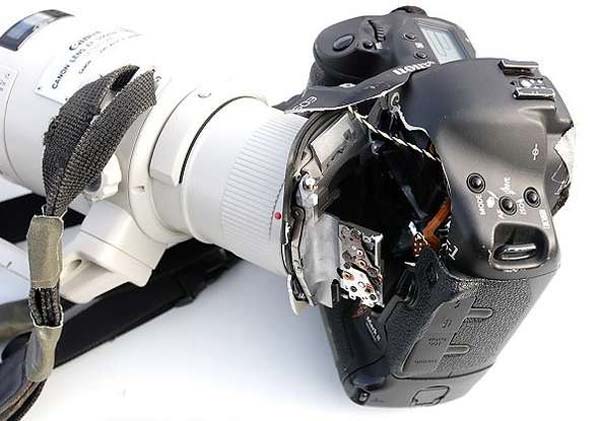Q: I was slightly afraid of bending the lens mount if I hold the camera body without supporting the lens with my second hand.
Were those fears justified? Or can I safely mount any lens on any compatible camera without worrying about the weight?
Bending the lens mount on the camera is unlikely, something else is virtually certain to give out first.
Videos at the end of this answer show cameras moving over 12 feet per second, propelled by some of the world's fastest robots - you can't move that fast.
Snapping off a lens is theoretically possible but not seen in these videos, even using unsupported lenses.
DPReview interviewed LensRentals.com Part 1 and Part 2 about a dropped Sony FE 70-200mm F2.8 GM, simply dropping your lens or camera should be your biggest concern.
All but the smallest cameras will have a lanyard or a means to attach a camera strap, larger lenses have a means to attach a strap also. Straps, unmounting your lens and a good camera bag with plenty of padding are all great insurance against drops.
While the strap may well prevent dropping your equipment they won't prevent a fall.
Since the lens mount on the camera body is a metal ring it is quite resistant to bending or damage, of greater concern is the mounts on the lens itself, and what the lens' mount pins attach to.
Camera and lens manufacturers seem reluctant to publish specific figures about torque or weight capacity for their mounts. Searching the Internet turned up no specific info (other than a Wikipedia page that says that the pins on a bayonet mount, which is the connection style most used, are the weakest part of the mount itself; but what the mount is attached to is also important).
See LensRentals.com's Blog post titled: Assumptions, Expectations, and Plastic Mounts where they discuss plastic mounts or the plastic lens body to which metal mounts are attached.
In the event of Link rot I'll quote what Roger Cicala describes as incorrect assumptions:
- Most micro 4/3 lenses have metal mounts (they don’t – only one does that I recall).
- All ‘professional quality’ lenses have metal mounts (they don’t, not even close to all do).
- Micro 4/3 lenses and NEX lenses all have plastic mounts, but ‘real’ SLR lenses have metal mounts (not true on either side of the comma).
- Plastic mounts are only used on cheap kit lenses and have only appeared in the last few years (They’ve been around for a long time on many lenses).
- Lenses with plastic mounts break more frequently than lenses with metal mounts (Nothing suggests this).
"I take apart lenses all day every day, so I was rather amazed to find all these facts spoken so dogmatically by people who claimed them to be absolutely true."
Note that the most expensive lenses are mostly metal and supported with rails.
Now for the photo.

Videos demonstrating the Bolt and Kira Motion Control Robots:
"Over 12 feet per second shown, theoretically up to 30 feet per second movement possible."
Bolt Motion Control Robot at Cinegear 2013
Bolt High Speed Demo - BTS
Kira Demo Reel at NAB 2016
Check out their YouTube Channels for many camera punishing videos.
[Disclaimer: No mounts were bent in the making of those videos.]


